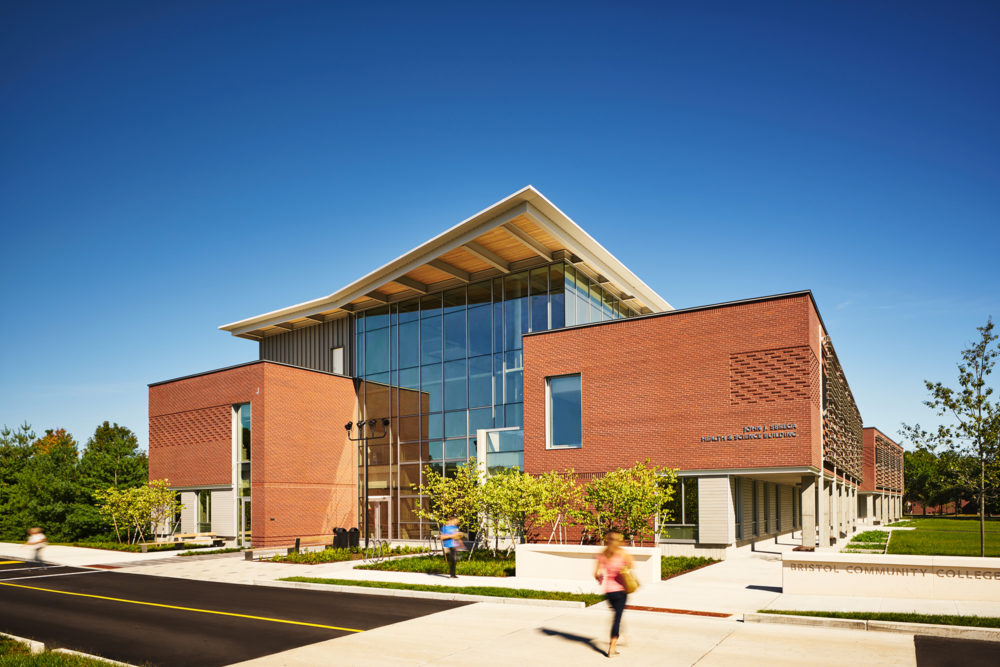
Bristol Community College John J. Sbrega Health and Science Building
Fall River, MA
 Sasaki
Sasaki
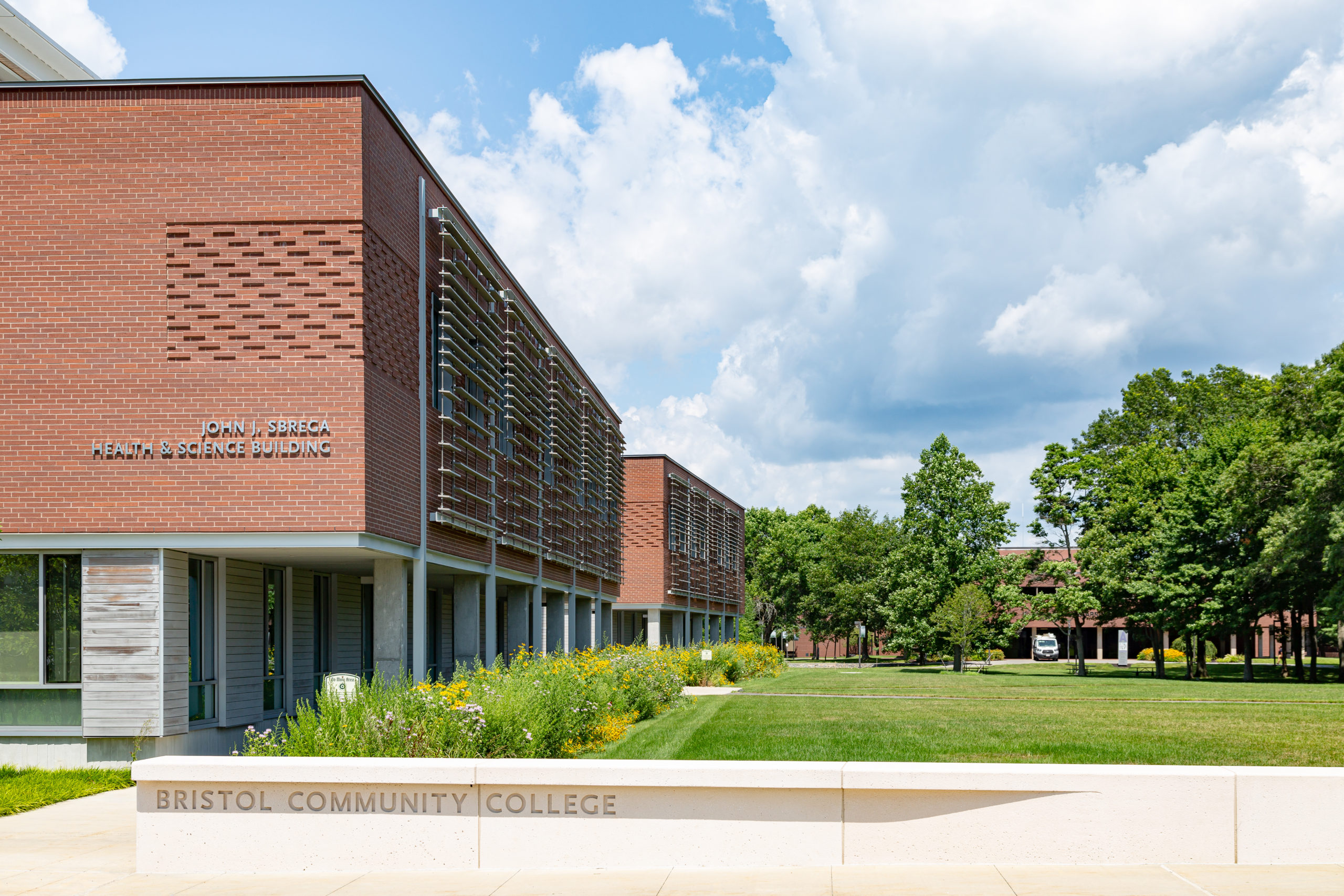
At Sasaki, collaborating across disciplines leads designers to approach sustainability and ecology in project work from multiple perspectives.
Regardless of project scale, tying together building and landscape requires consistent attention and intention to develop complete ideas that can successfully be carried through to implementation.
At Bristol Community College, Sasaki architects and landscape architects worked in close collaboration from concept design through construction to create a zero net energy (ZNE), LEED Platinum building and landscape that seamlessly compliment one another. Located at the gateway of campus, the John J. Sbrega Health and Science Building is designed to be highly sensitive to its surroundings. The infrastructure and landscape collect and display all stormwater that falls onto this former greenfield site, and, in turn, encourages user interaction with the landscape through the artful planting of stormwater basins. This result is a landscape, celebrated by campus and community users that looks and performs differently than others on campus.
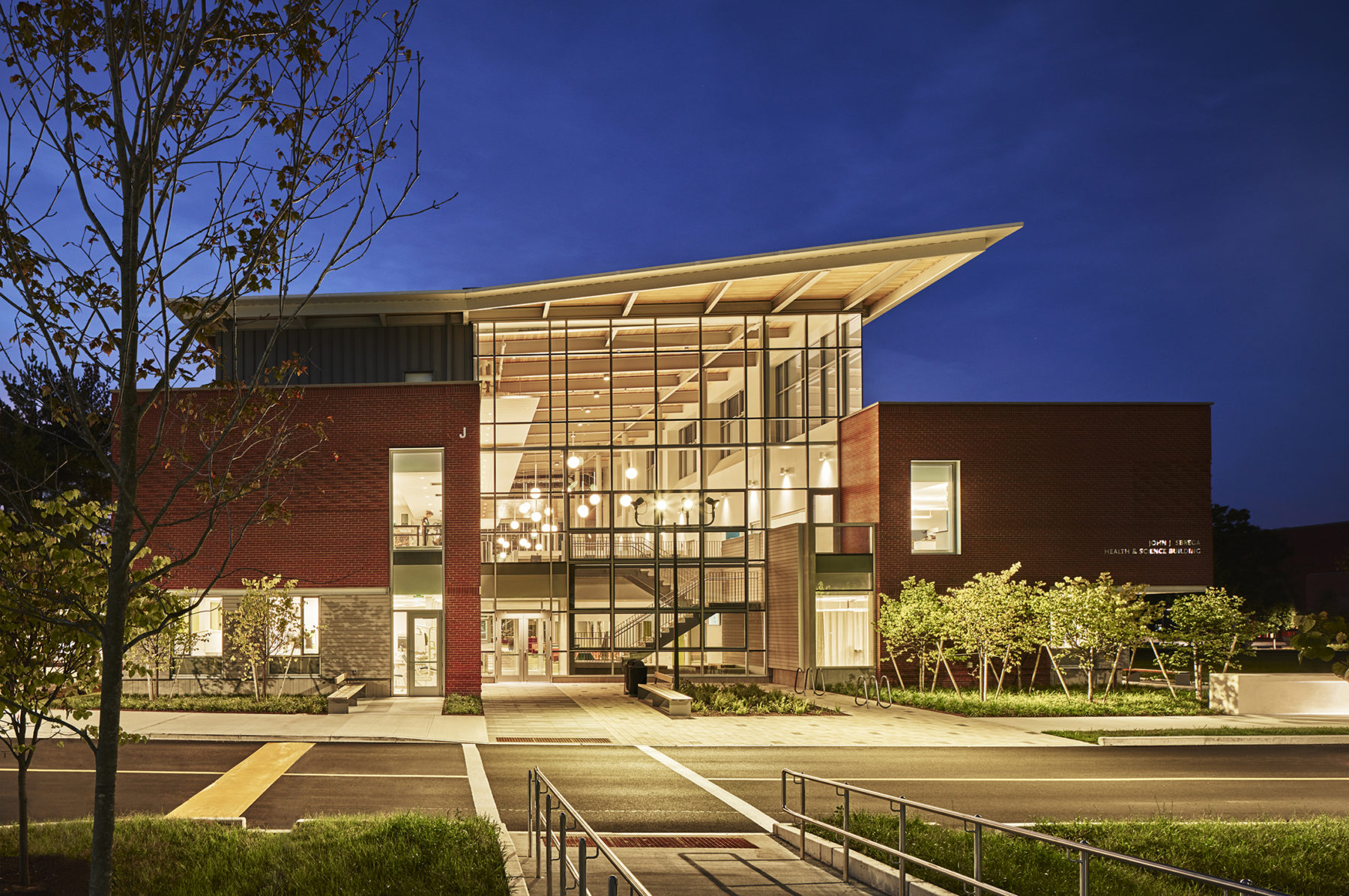
From the street, pathways continue right through the building’s front doors
To accommodate the area’s large volume of pedestrian traffic, the team used visual cues that begin outside the building and continue through the central walkway to lead people through the space, integrating the building’s interior and exterior through wayfinding
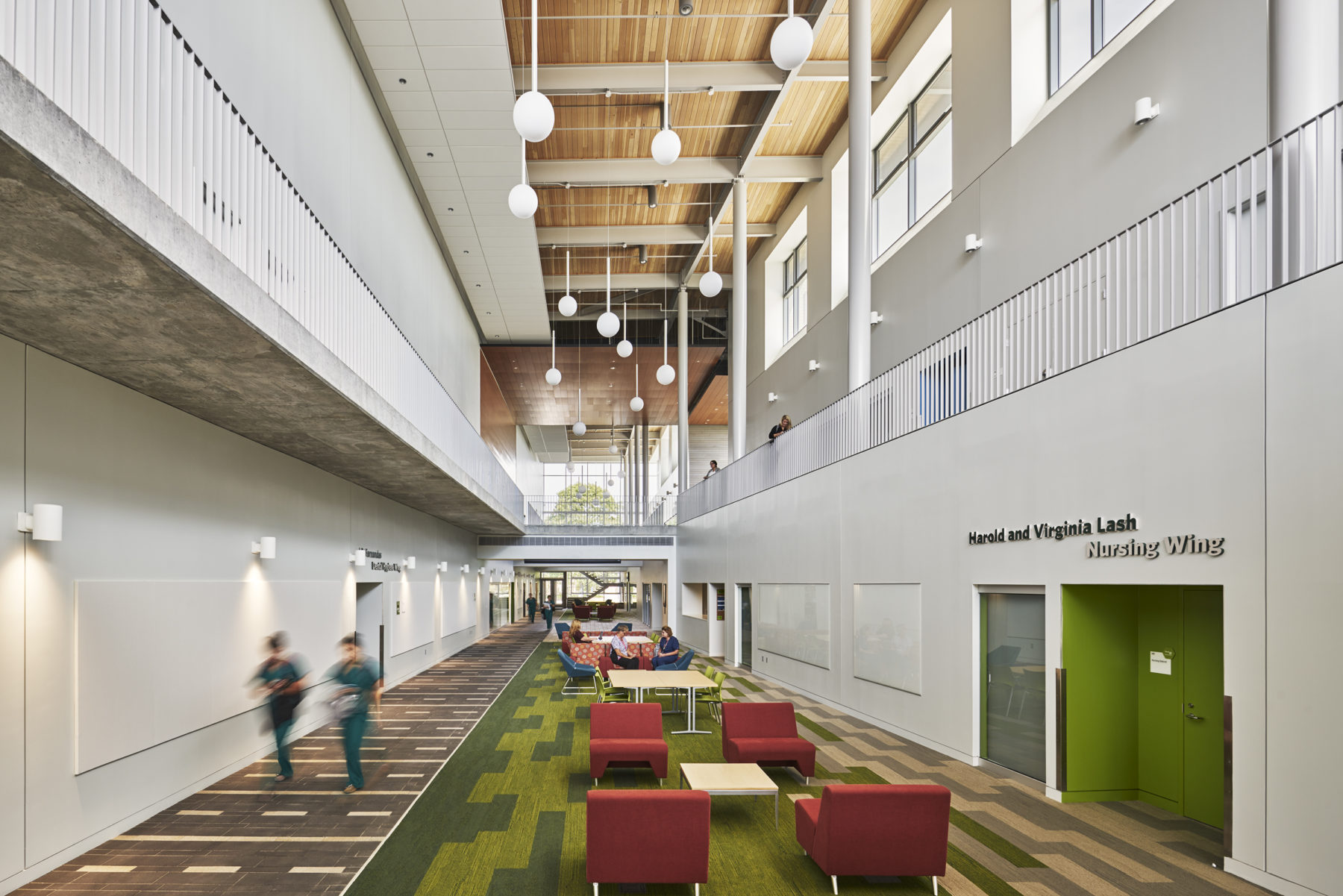
Red chairs pop with color against the green carpet, much like wildflowers do in a natural landscape. The carpet’s pattern also echoes the paving pattern used in the outdoor and indoor walkways, creating a cohesive visual language inside and out of the building.
In addition to being a central throughway on campus, the landscape serves as a critical stormwater juncture for the area. From the start, processing the site’s large amounts of stormwater was a major design driver and an opportunity to engage people with the local ecology. The site’s new water mitigation strategy features mingle with pedestrians via a network of paths, gardens, and stopping points in the landscape.
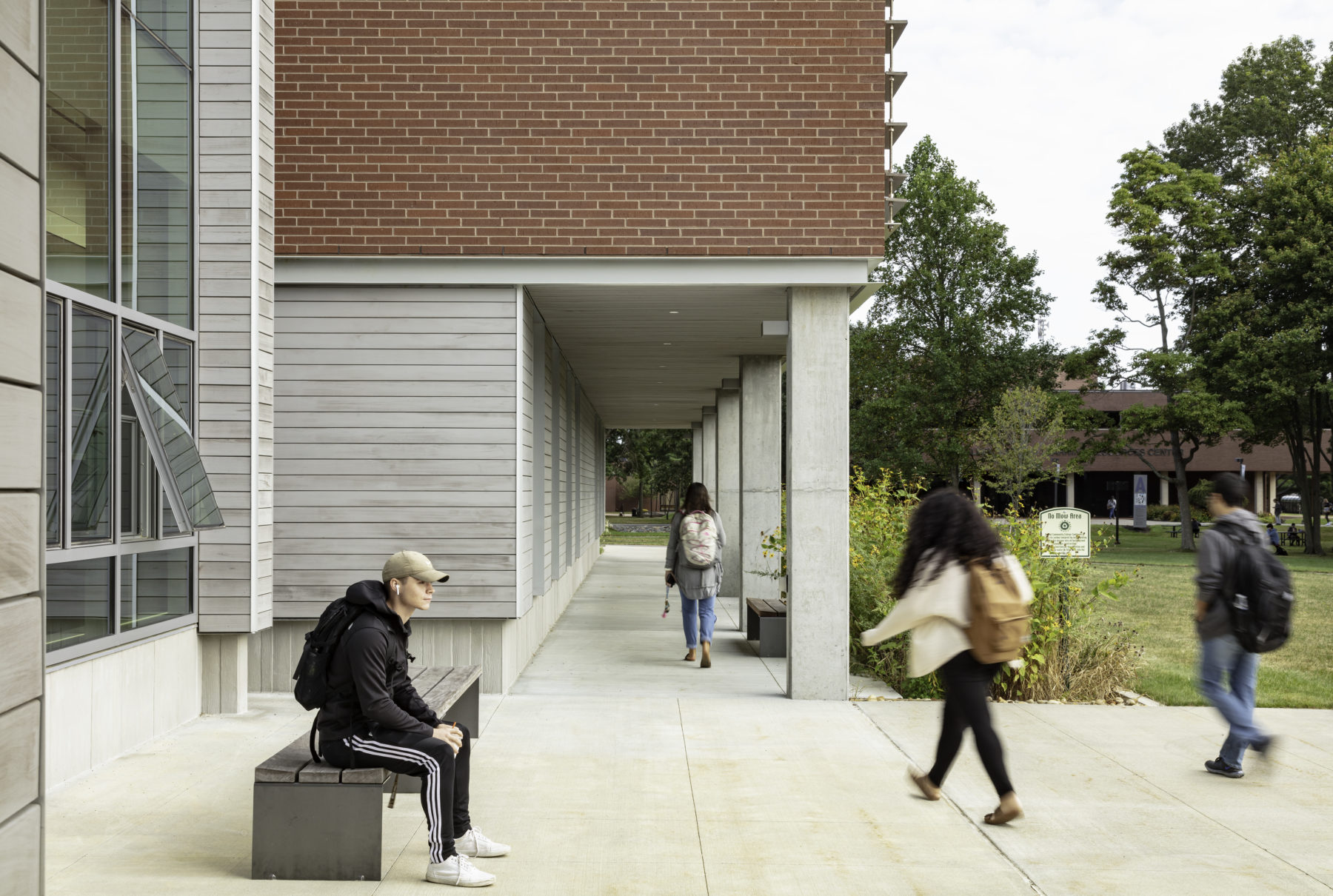
Students and community members pass by native plantings fed by stormwater from downspouts on their way to class
At Bristol Community College, the process of contextualizing the landscape started as far upstream as possible. The design process always focused on how the designs for the landscape and building would play off one another. Now, as people walk alongside the building they have the opportunity to engage with local ecology as water flows directly from rainwater drains on the side of the building into the surrounding rain gardens.
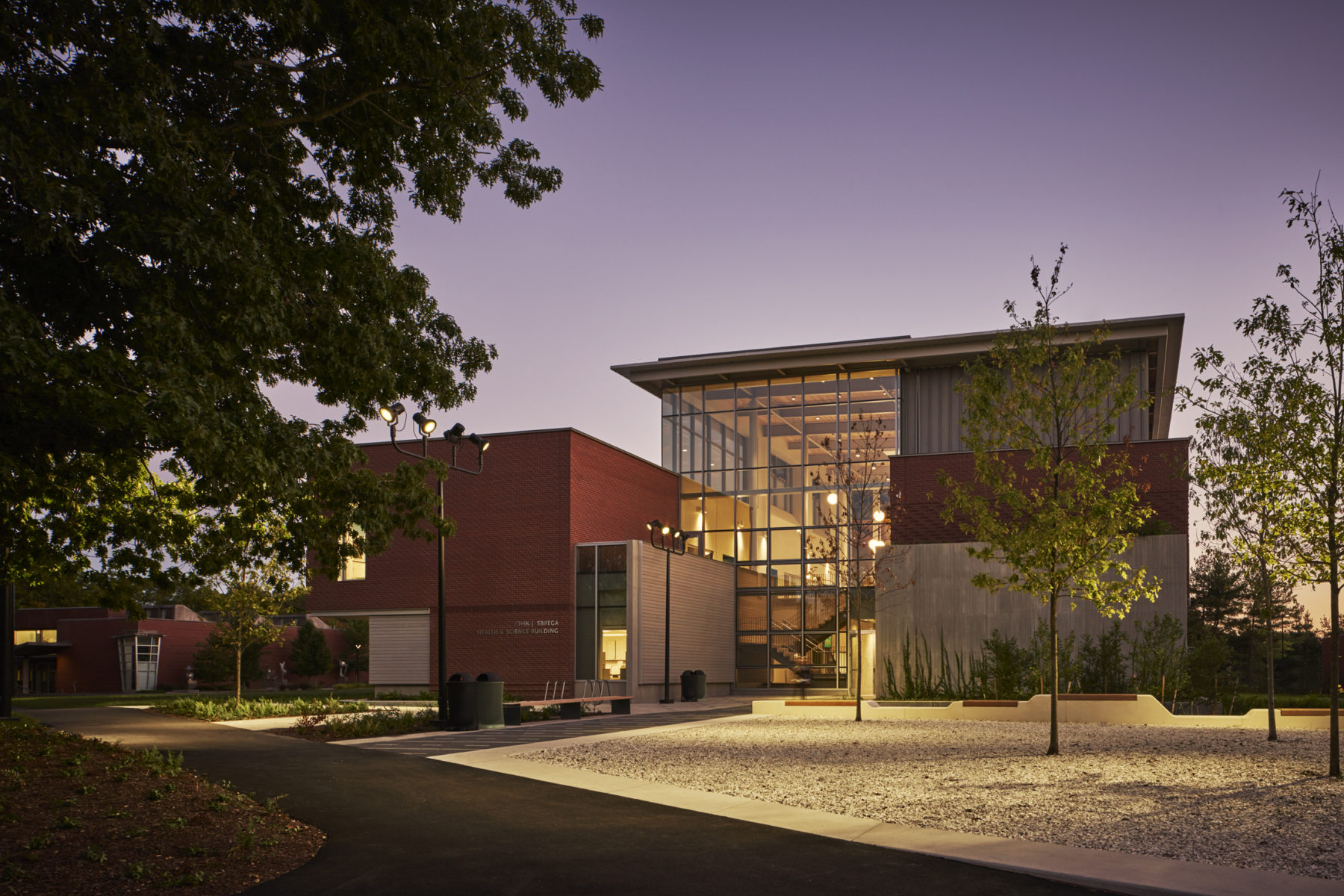
Stormwater seeps through repurposed seashells and infiltrates the ground below
In total, the stormwater features on campus can treat over 50,000 gallons of water at a given time. All of the new sidewalks, plazas, and roads are designed to drain water directly into new stormwater basins, and a 10,000 gallon detention facility is located underneath the lawn.
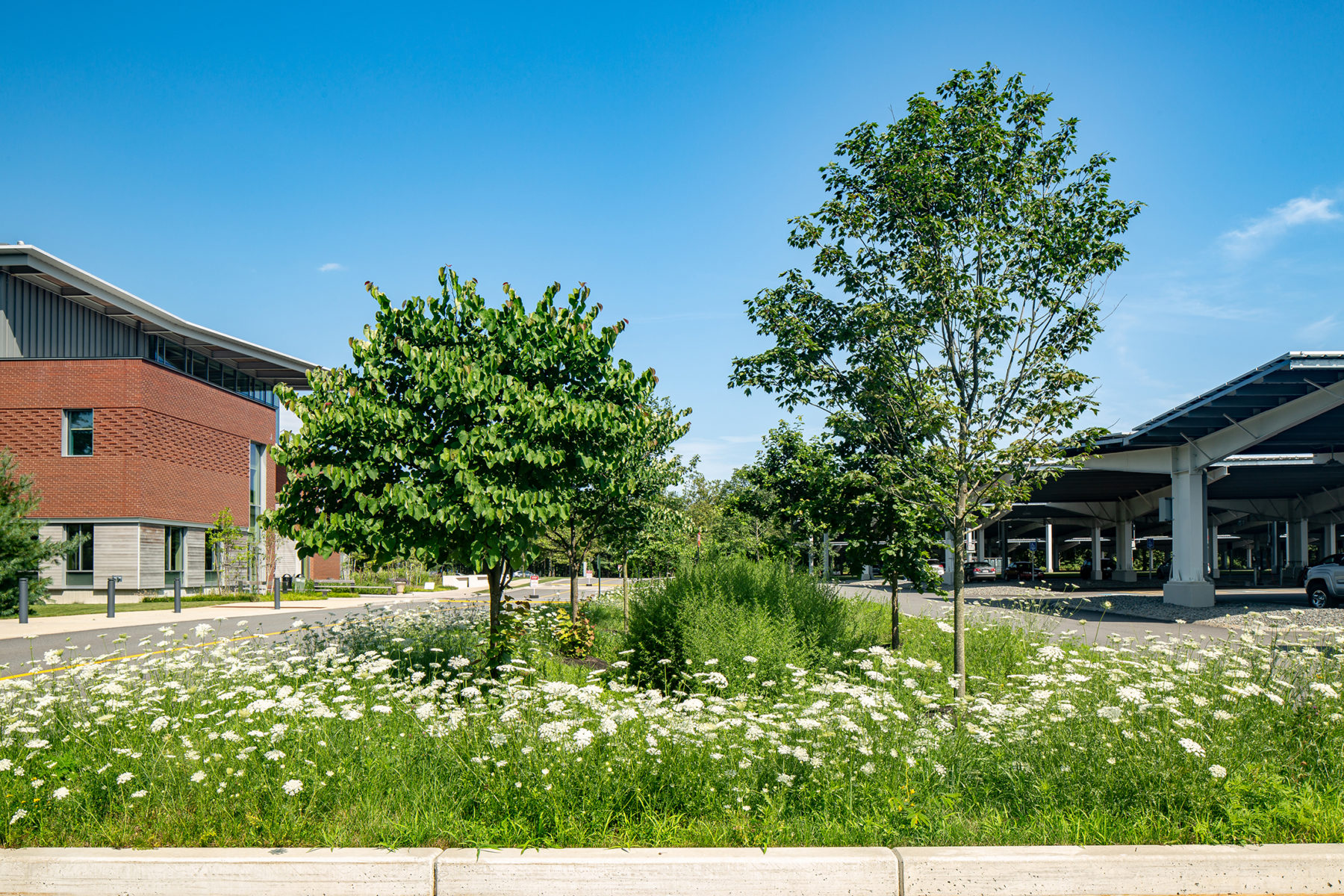
Native plants receive stormwater runoff from the road that’s collected in stormwater basins
When stormwater runoff is unregulated, it washes chemicals and compounds like oil, gasoline, salts, and litter into streams, wetlands, rivers, and oceans. To reduce environmental harm, the team installed trees, vegetation, green roofs, and bioretention basins to collect stormwater runoff at its source, improving the quality of ecosystems at varying scales.
But not all stormwater interventions were new: instead, the team sought to celebrate and refresh the design already in place. The stormwater basins are an evolution of existing drainage-ways currently seen throughout campus.
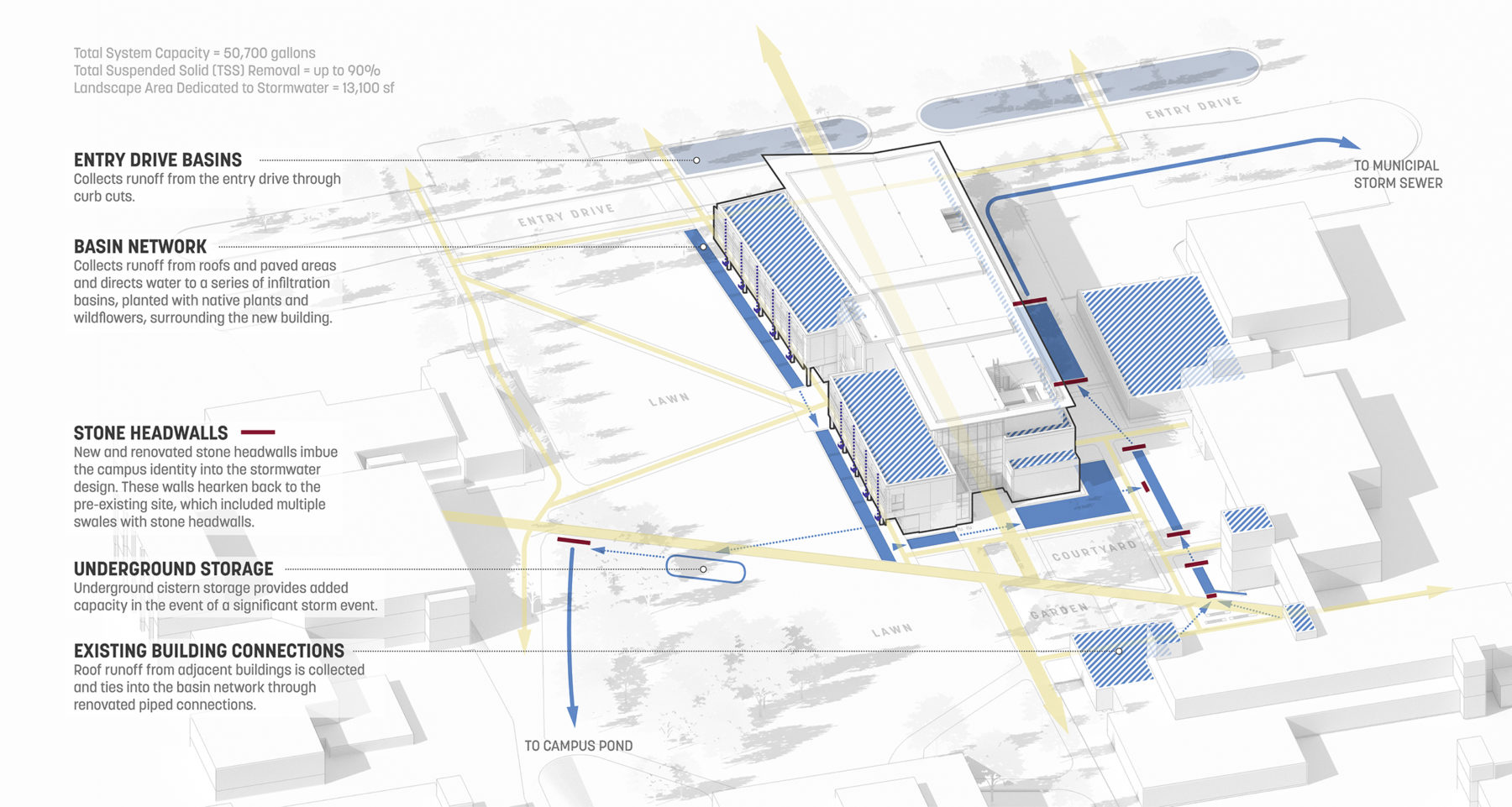
The blue lines represent where stormwater is collected from roofs and channeled into specific parts of the landscape. Yellow indicates where people interact with water and the landscape.
The team also carefully selected trees that, when fully mature, will help intercept approximately 100,000 gallons of stormwater. Additionally, these trees will help to conserve approximately 6,900 kilowatt hours of energy and sequester approximately 32,700 pounds of carbon annually, which will save Bristol approximately $11,500 each year.
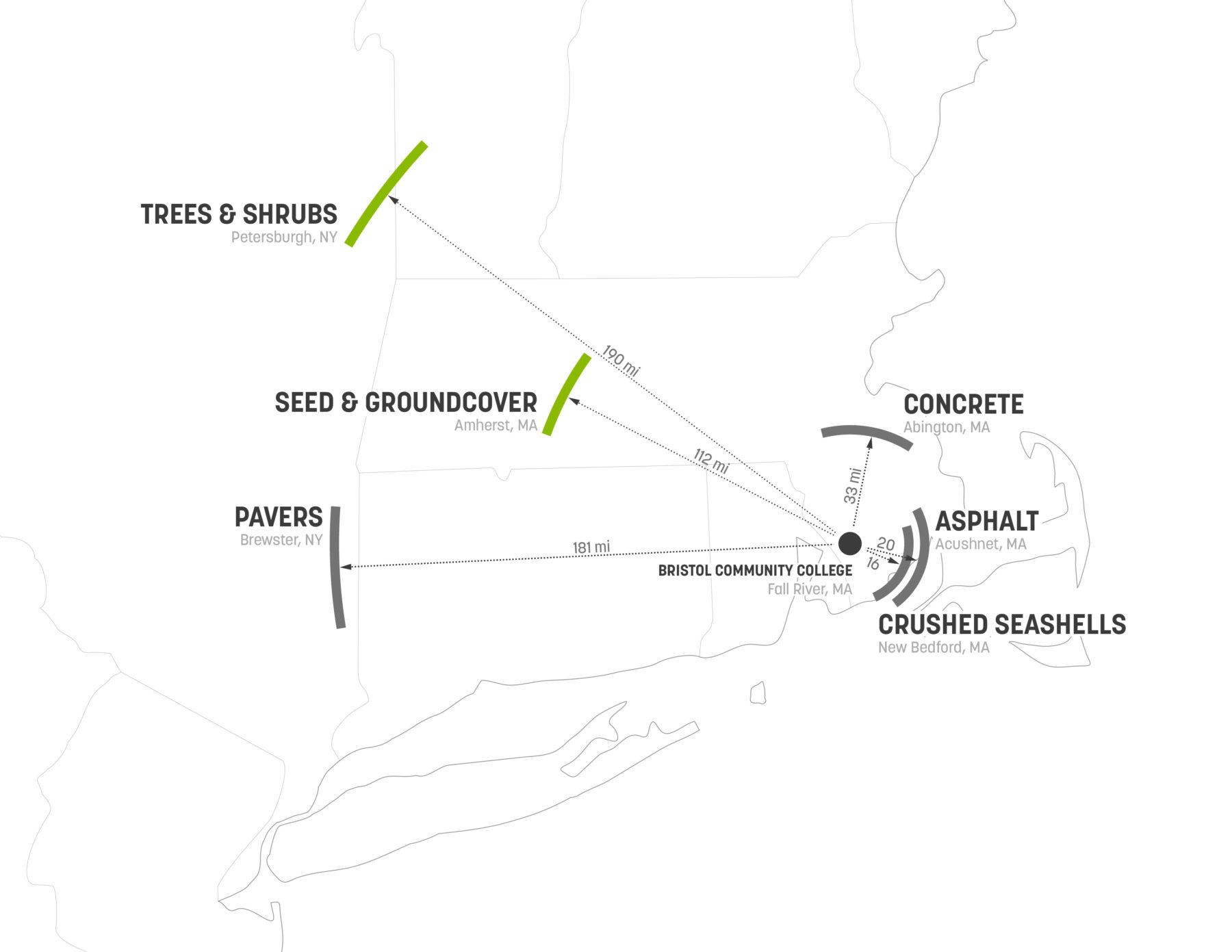
Given Fall River’s close proximity to many landscape material suppliers, the hyper-local sourcing of materials reduced the project’s carbon footprint and lowered shipping costs
The stormwater management system directly channels runoff into new stormwater gardens full of native plantings. “The landscape is designed in a way that is beneficial to the building. Not only do the gardens perform important stormwater management functions, but the planting palette was intentionally designed to be vibrant and reflective of similar natural landscapes found in southern New England.” says Sasaki landscape architect Ian Scherling, ASLA.
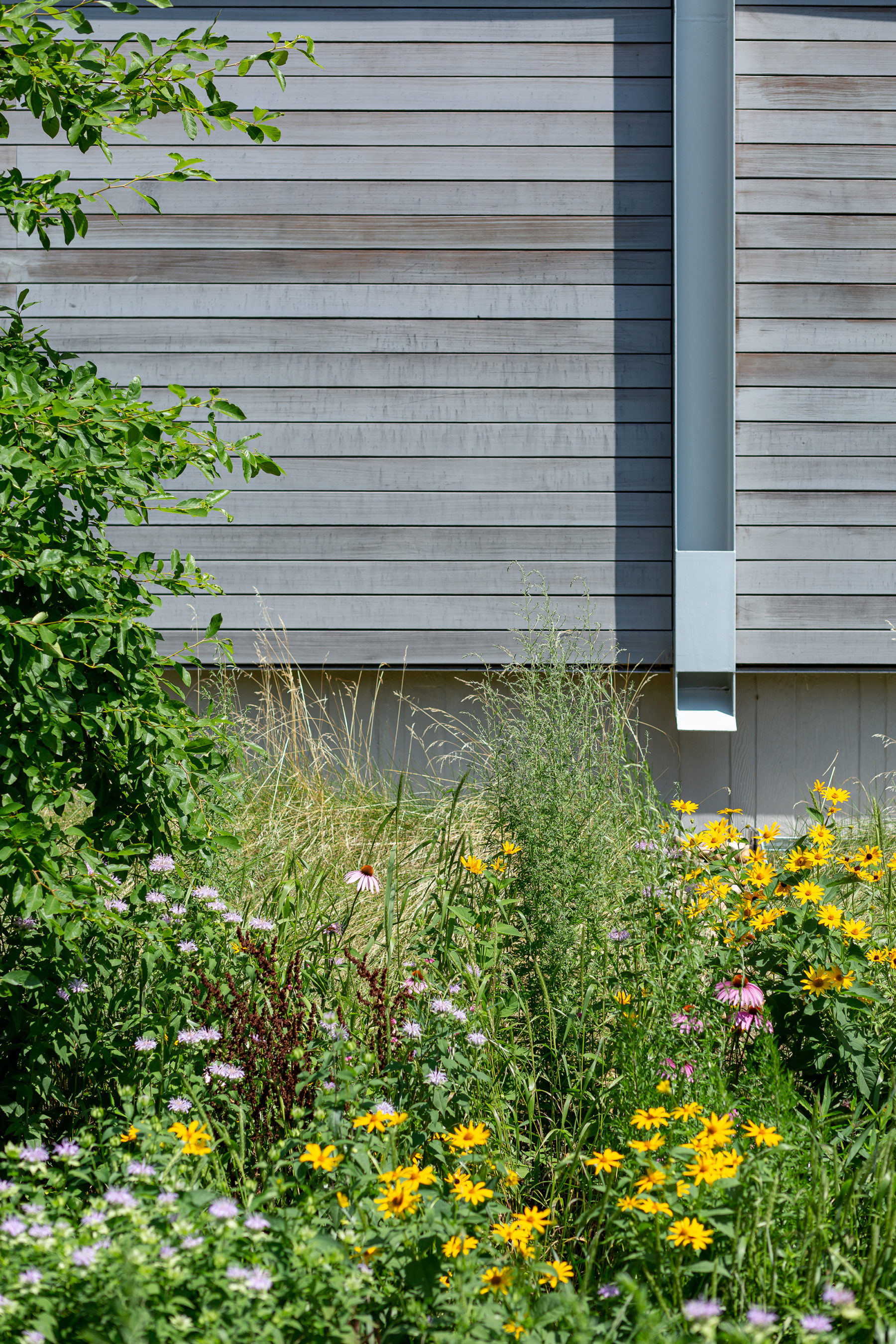
Downspouts channel water directly into the rain gardens alongside walking paths
Trees, shrubs, seed, and groundcover were all sourced from within 200 miles of the project site, and all trees and vegetation planted are native, which promotes biodiversity and a healthy local ecosystem. The plants selected for Bristol Community College also reduce maintenance pressures and costs, and trees store carbon dioxide and reduce heating and air conditioning demands, thereby reducing emissions related to heating and cooling buildings.
“Native plants bring a huge return on investment in environmental dollars,” says Scherling.
Visually, native plantings also present year-round benefits. What once was a campus dedicated to lawns is now an inclusive environment, full of welcoming gardens and native trees that greet people immediately as they enter campus.
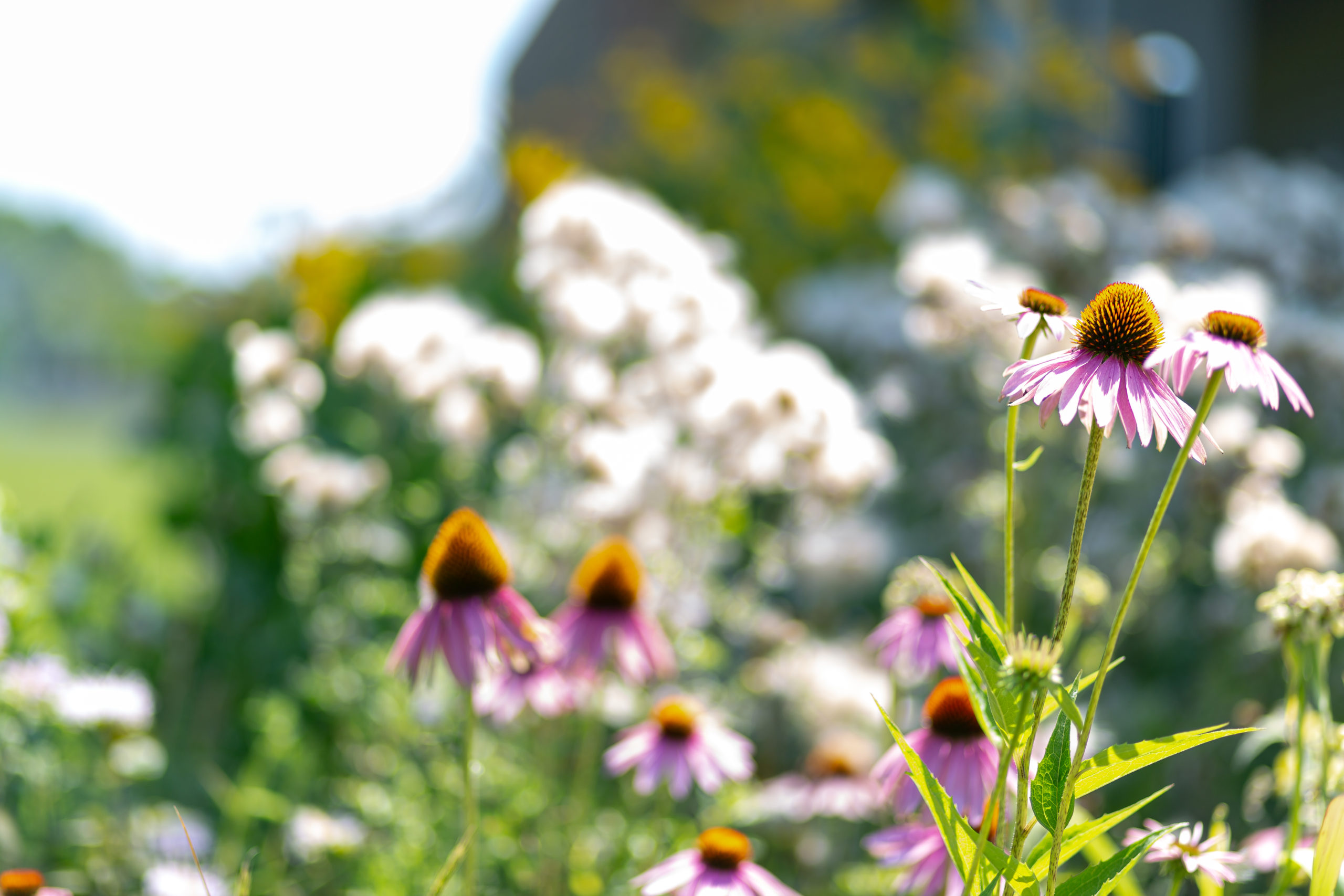
“In any given season, you can see color, which is appealing to both people and pollinators,” says Scherling
These gardens may seem more wild and meadow-like than the more orderly plantings pedestrians usually see on campuses. Since many people may not understand why the new gardens look more natural and less orderly, the college created signs to teach people why the plantings look the way they do. Now, the landscape provides students, faculty, staff, and the community an opportunity to learn about local ecology, biodiversity, and pollinator habitats.
“This project introduces people to a new kind of landscape. It’s our hope that all users can grow to understand and appreciate its value and unique beauty.” says Scherling.
Whether or not people are surprised to see a more natural landscape, the new design represents an important moment in the evolution of the college’s environment. In the process of working with Sasaki, Bristol Community College has embraced these different landscapes and the lasting impacts they will have on their local community.